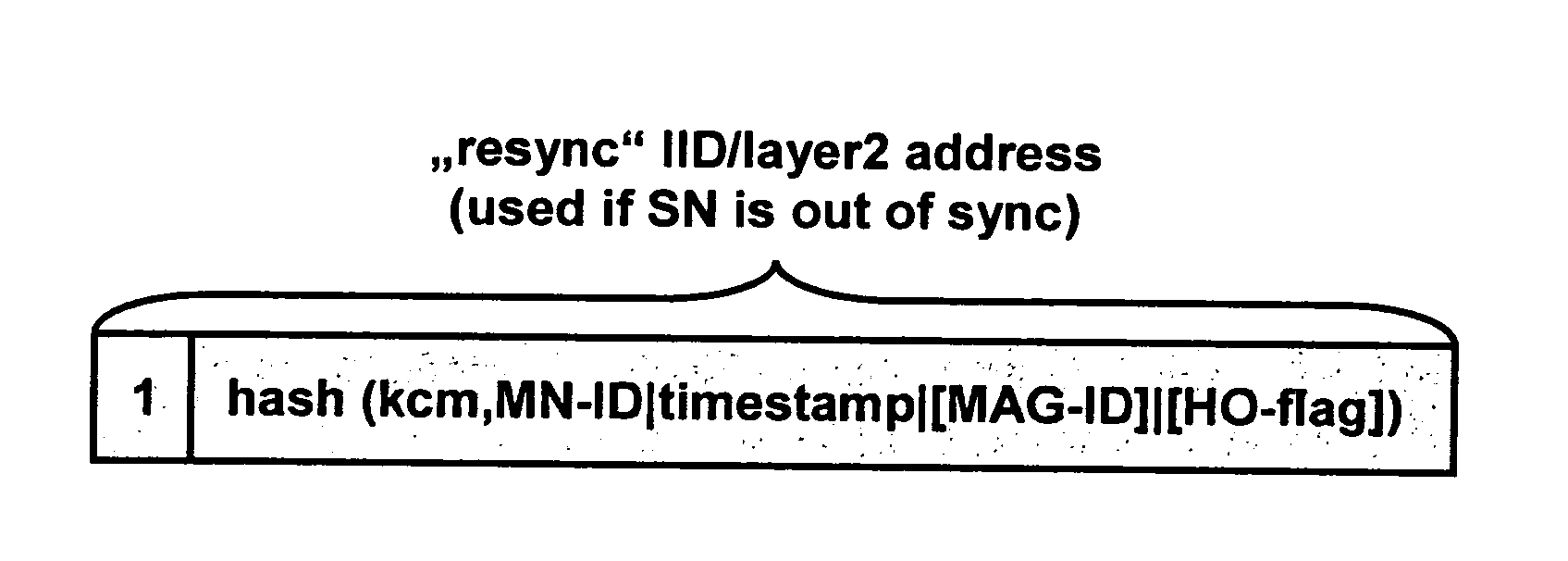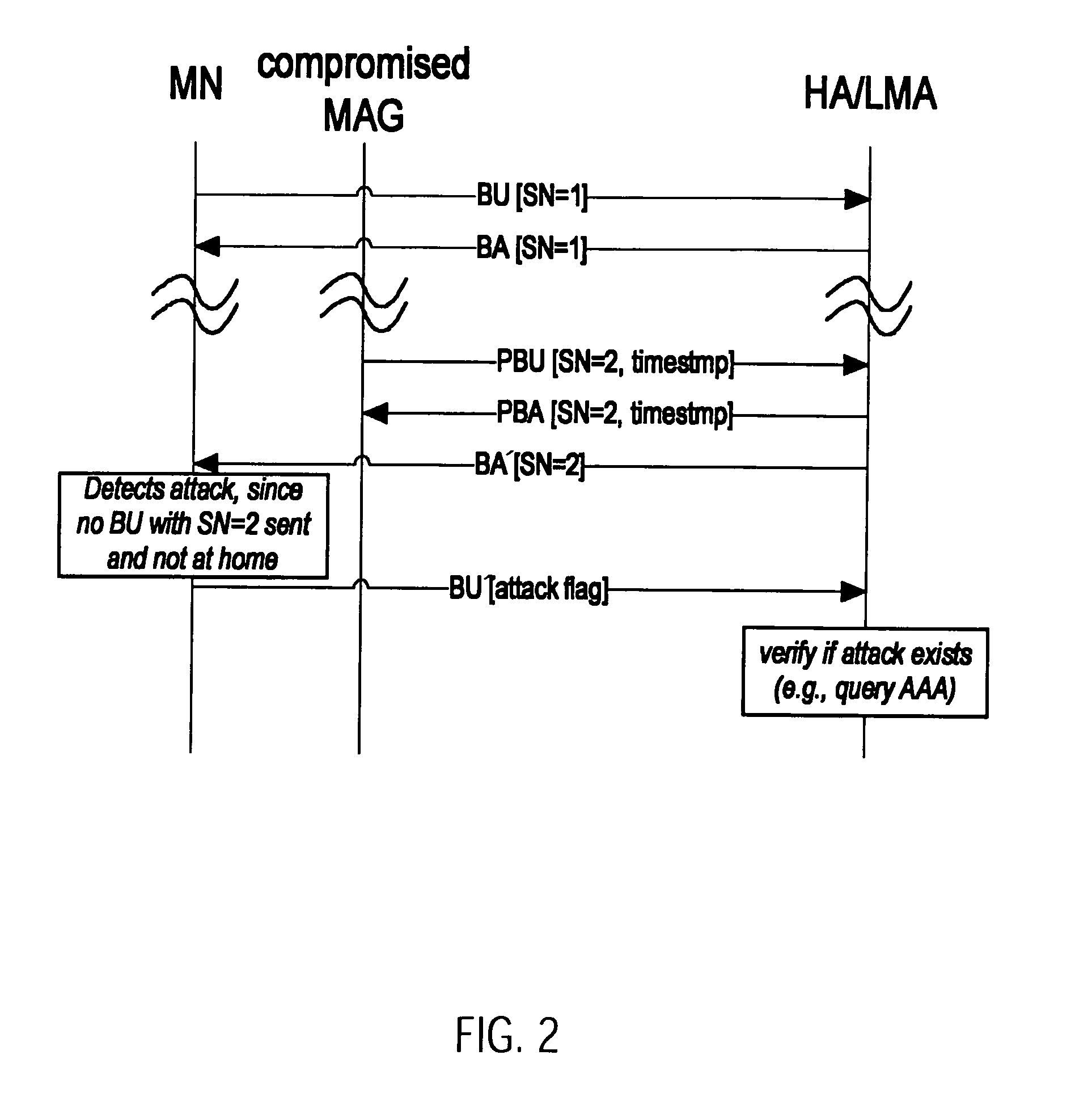Methods in Mixed Network and Host-Based Mobility Management
a technology of mobility management and mixed network, applied in the field of mobility management of mobile nodes in packetbased communication networks, can solve the problems of high packet delay, inefficient routing, and connection breakage of one node, and achieve the effect of preventing an increase of handover delay, reducing handover delay, and not increasing handover delay
- Summary
- Abstract
- Description
- Claims
- Application Information
AI Technical Summary
Benefits of technology
Problems solved by technology
Method used
Image
Examples
first embodiment
[0241]A first variant of the first embodiment according to a first aspect will be described with respect to FIG. 2. A mobile node is located in a domain implementing a client-based mobility management scheme. The mobile node thus communicates its position by sending a binding update message BU to a Local Mobility Anchor LMA. The Local Mobility Anchor LMA first checks authentication information contained in the binding update message BU to identify that this binding update BU can be trusted. After having accepted the binding update, the Local Mobility Anchor LMA then transmits a binding acknowledgment message BA to the Care-of-Address of the mobile node contained in the binding update BU to confirm that the Care-of-Address was saved in the binding cache entry of the Local Mobility Anchor LMA.
[0242]FIG. 2 illustrates an attempt by a compromised Mobile Access Gateway in a domain implementing a network-based mobility management scheme to redirect traffic destined to the mobile node. The...
second embodiment
[0261]the invention according to a first aspect will now be described with respect to FIGS. 4 and 5.
[0262]A first variant of the second embodiment according to a first aspect will be described with respect to FIG. 4. A mobile node is located in a domain implementing a client-based mobility management scheme. The mobile node thus communicates its position by sending a binding update message BU to a Local Mobility Anchor LMA. The Local Mobility Anchor LMA first checks authentication information contained in the binding update message BU to identify that this binding update BU has really been sent by the mobile node corresponding to the home address contained in the BU. After having accepted the binding update, the Local Mobility Anchor LMA then transmits a binding acknowledgment message BA to the Care-of-Address of the mobile node contained in the binding update message BU to confirm that the Care-of-Address was saved in the binding cache entry of the Local Mobility Anchor LMA.
[0263]F...
PUM
 Login to View More
Login to View More Abstract
Description
Claims
Application Information
 Login to View More
Login to View More - R&D
- Intellectual Property
- Life Sciences
- Materials
- Tech Scout
- Unparalleled Data Quality
- Higher Quality Content
- 60% Fewer Hallucinations
Browse by: Latest US Patents, China's latest patents, Technical Efficacy Thesaurus, Application Domain, Technology Topic, Popular Technical Reports.
© 2025 PatSnap. All rights reserved.Legal|Privacy policy|Modern Slavery Act Transparency Statement|Sitemap|About US| Contact US: help@patsnap.com



